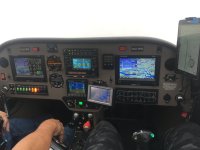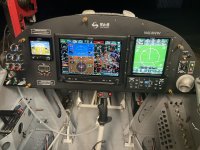Hi All,
I'm looking for some advice on what's the minimum equipment I'd need to add to my VFR RV-7 to be IFR legal? Asking because I equipped my RV-7 for VFR only and now I'm scoping out the possibility of an upgrade. I currently have a Dynon Skyview system with one HDX display, a single ADAHRS and a Dynon (non IFR certified) GPS. I believe I need at a minimum second/backup attitude indicator, a second ADAHRS and a IFR-legal GPS. Is there anything else I'm not thinking of? And a related question, IFR GPS units seem to range in price from very reasonable to well over $20K. What would the high end units give me that the cheaper ones would not?
Again, I'm just in the initial stages of scoping the possibilities of an up grade. I'd still have to go get the IFR rating if I chose to go that way. Just trying at this point to understand the possibilities.
thanks
-Ivan
I'm looking for some advice on what's the minimum equipment I'd need to add to my VFR RV-7 to be IFR legal? Asking because I equipped my RV-7 for VFR only and now I'm scoping out the possibility of an upgrade. I currently have a Dynon Skyview system with one HDX display, a single ADAHRS and a Dynon (non IFR certified) GPS. I believe I need at a minimum second/backup attitude indicator, a second ADAHRS and a IFR-legal GPS. Is there anything else I'm not thinking of? And a related question, IFR GPS units seem to range in price from very reasonable to well over $20K. What would the high end units give me that the cheaper ones would not?
Again, I'm just in the initial stages of scoping the possibilities of an up grade. I'd still have to go get the IFR rating if I chose to go that way. Just trying at this point to understand the possibilities.
thanks
-Ivan








